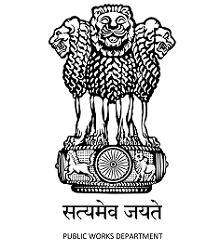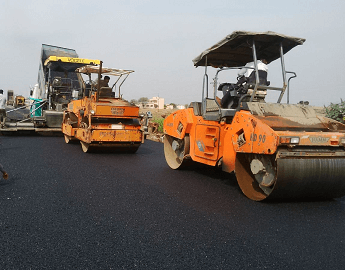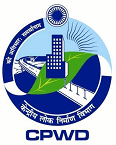PWD - Public Works Department
The infrastructure is an important aspect in the Government sector and in the public sector. Therefore, the construction of roads, bridges, and all the related civil projects must be organized and systematic. Hence the Public Works Department (PWD) is the organization to handle these government projects. These projects are crucial as they help in the development of the country. For example, a well-constructed road will promote an efficient transportation system that will contribute to the economy of the country. It makes transportation and other operations easier through construction projects. It reduces unemployment by providing opportunities to people having different skills. Therefore, the Public Works Department holds great importance in the progress of the country. What is PWD?PWD is the short form of the Public Works Department. It is Government department that handles the construction and maintenance projects of the Government. It is responsible for the construction of buildings, roads, railways, bridges, etc. The public works department is constructed for recreation, health, safety, and employment to the public. 
History of Public Works Department in IndiaDuring British rule, the public works department was not much systematic. It was responsible for the irrigation, buildings, and road construction. The projects of PWD also included building canals, dams, reservoirs, etc. Moreover, PWD was under the Military Board of the Imperial Government. However, this department was not much effective back then. Hence the attention of the Government was brought on the unsatisfactory management of the department. After which, the court of directors of the East India Company instituted commissions for investigation in 1850. In March 1851, Bengal Commission also submitted its report. The public works department was founded by Lord Dalhousie, which made public projects such as irrigation and construction of roads was possible. The commission presented a new proposal. Its features that were accepted by the court of directors are as follows -
Important dates in the History of PWDOn 21st April 1854, the Bengal Presidency took charge and controlled and managed the PWD. The major sections PWD was divided into are - civil, military, and railway; this was not until 1866. Eventually, in 1866, Lord Lawrence also started the system through which the general public could invest in the public works department.Hence the department got its investment by borrowing from the public. After the implementation of this system, various projects like Midnapore Canal, Orissa Coast Canal, etc., were constructed. The year 1870 lead to the introduction of a local government system. The Local Government started to follow the British rules. Afterward, in 1893, provincial services were created for each service of the provinces of India. These were divided into the following categories -
The engineers were further divided into Imperial Services and Provincial Services. In 1895, PWD became the exclusive civil department with complete bifurcation from the military branch. PWD is responsible for construction projects and public unity projects such as the construction of buildings, bridges, and railways. As more initiatives were taken to improve the public works department, there was a significant increase in the workload on the department. The public works department was divided into two different departments to reduce the workload. These were known as the public works and irrigation; this was not until 1920. The PWD is under the state government today. Although the key functions are almost similar to those ofthe PWD under British, it is now more structured, and management is systematic. The public works department contributes to the country by generating employment, improving the infrastructure, and conducting public works like constructing dams, bridges, roads, and railways.The state government even gave some public work to the district government as the local governments have become much more developed. Functions of Public Works DepartmentPWD is one of the oldest departments that is responsible for public works. Thefunctions of the PWD include the following -
PWD executes these projects that are financed by the state government and are considered under civil works. Central Public Works DepartmentThe PWD department is separate for each state and is controlled by the state government. However, the Central Public Works Department is under the Central Government. Hence CPWD facilitates all the civil works related to the central Government. The CPWD has major responsibilities such as constructing roads, bridges, buildings, auditoriums, laboratories, flyovers, border roads, etc. Today, CPWD has become a construction management department,and it provides services such as completion and maintenance of projects. The head of the Central Public Works Department is Director General (DG). DG is the Principal technical Advisory to the Government of India. Special DGs are the head of the regions, additional DGs is the head of sub-regions, and chief engineers manage the zones in any state or capital. Now, a Chief Project Manager (CPM) is also introduced to manage major projects of the CPWD. The CPWD can take challenges to construct and maintain complex projects. Functions of CPWD

Consultation and Advisory Functions of CPWDThe Director General is the technical advisory of the Government and is consulted in any technical matter related to the construction and maintenance of any Government project. The CPWD provides consultancy to the Ministry of External Affairs regarding the construction of buildings abroad. How to get a job in PWD?Eligibility
Qualifications for PWD RecruitmentAcademic qualifications for recruitment in PWD are different for different posts. The candidate must at least have a secondary educational qualification from a recognized board. Exam Pattern for PWD RecruitmentWritten pen andpaper-based testsare conducted for screening the candidates for the next round. The candidates that qualify for the first round are called for the interviews. Some of the tests are also taken online on a computer-based platform, and these are generally for the higher posts. The tests comprise of the general and technical topics, and the exam is of 180 minutes duration. Syllabus of PWD ExaminationThe syllabus for the examination of the recruitment process of PWD is different for different posts. The syllabus will vary according to the field of students and the post they have applied for. Generally, the syllabus will be based on the following -
Recruitment Process of PWDExaminationPublic Works Department recruits people through the exam conducted by the Union Public Service Commission. It is mandatory to qualify for the Engineering Services Examination to enter PWD entry-level middle management. The selection in CPWD is done on the basis of the merit of the candidate. Hence only top rankers in ESE are hired. ESE is the examination that takes place under the UPSC. It is conducted to select candidates for various government posts in the technical domain. The main branches for which ESE is conducted are civil, mechanical, electrical, electronics, and telecommunication. Candidates qualifying for this examination are eligible for the technology and posts related to management in various government organizations. The task of these candidates is to implement their knowledge in the Government projects and support their department. Exactly like other Government sector organizations, PWD also recruits its employees through the Engineering Services Examination. TrainingTraining of the selected candidates is for 52 weeks. It is generally at a CPWD academy designed for this operation. The primary function of this academy is to transform the candidates into competent Architects/Engineers and bureaucrats. Levels in CPWDThe career levels in CPWD include Chief Architect/Engineer, Additional Director General, and Special Director-General. Among the different levels, the Director-General is the apex level in CPWD. It acts as the technical advisor to the Government of India. Moreover, the Government of India has now given an additional post to the Director-General. Hence, today, there are two Director General Posts. Advantages and Disadvantages of Working in PWDThe advantages and disadvantages of working at PWD are almost similar to every Government job. AdvantagesListed below are some of the advantages of working in PWD -
Disadvantages
ConclusionPublic Works Department is an organization that is responsible for the construction and civil projects of the Government. Generally, these are development projects such as the construction of government buildings, roads, bridges, canals, etc. Moreover, it is also responsible for the construction of residential placesfor government employees. All these projects aid in the smooth functioning of the system and add to the economy of the country. It makes transportation and other operations easier through construction projects. It reduces unemployment by providing opportunities to people having different skills. |
 For Videos Join Our Youtube Channel: Join Now
For Videos Join Our Youtube Channel: Join Now
Feedback
- Send your Feedback to [email protected]
Help Others, Please Share










